Professor Dwight Seferos is part of the CANSTOREnergy research project led by Professor David Sinton. Recently, the team received $24M through the federal New Frontiers in Research Fund’s 2022 Transformation Competition. The Seferos research group will use their chemistry expertise in polymer science and electrochemistry to help create community-tailored clean energy technologies.
Climate change has become a pressing challenge in Canada, leading to environmental efforts such as the Paris Agreement. Yet, Canada is heavily dependent on fossil fuels, despite its natural abundance of renewable energy sources. The most significant barrier is Canada’s large and unique landscape — with some areas being remote while others are densely populated. Hence, implementing a universal solution is ineffective, as each city has their own societal challenges.
For example, the biggest challenge in Yukon is that its renewable energy supply is out of sync with seasonal electricity demands. Although their electric grid is powered by hydropower, they cannot use it during winter due to seasonal extremes and grid connectivity issues. Instead, they must import diesel fuel, which is costly and a big contributor to CO2 emissions that are determinantal to the environment. Yet, they produce excessive levels of renewable energy in the summertime. Despite the potential, renewable energy is often wasted in the summer when the demand is much higher in the winter.
Unlike Yukon, Hamilton is connected to North America’s power grid, which benefits their local economy. However, this dependency leads to air pollution problems, disproportionately harming low-income and marginalized communities.
The CANSTOREnergy aims to conquer this barrier. Their Principal Investigator, Professor David Sinton, has devised a holistic solution to this issue based on carbon capture and reuse. Namely, they will use electrochemical methods to transform CO2 to either useable chemical feedstocks or less environmentally harmful compounds. It will lead to a net zero means, as this project produces a seasonal storage for renewable energy while greatly reducing greenhouse emissions. By acknowledging Canada’s diversity, this project develops community-tailored technologies rather than imposing a one-size fits all solution.
The CANSTOREnergy project consists of researchers from eleven Canadian universities, engineers, social scientists, and economists. They have consulted “stakeholders and advisers in industry, utilities, government, and Indigenous nations.” One of its co-applicants is Chemistry Professor Dwight Seferos. He and his research group used their material chemistry and electrochemistry knowledge to create electrochemical carbon capture tools.
Our group’s expertise in materials chemistry and electrochemistry allows us to contribute to this project by preparing large molecules (polymers) that modify the interfaces that are critical in these processes. We hope to greatly expand both the types of chemistry that is possible as well as the rates of these reactions that we foresee to be the path forward toward carbon neutrality.
-Dwight Seferos
Read the Full Press Release
April 25th, 2023 | U of T News


